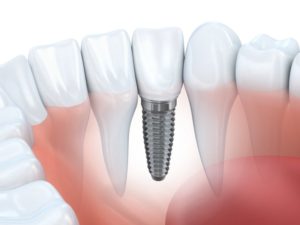Want Dental Implants in Springfield? Don’t Start Without This Device!
August 6, 2018
 Finding a dedicated dentist who can also place implants is not always easy. Even if they do, there’s no guarantee that they’ll have all the best tools to ensure the treatment is as successful as can be. However, if you choose to get your dental implants in Springfield, you can experience the new standard of dental implant planning technology.
Finding a dedicated dentist who can also place implants is not always easy. Even if they do, there’s no guarantee that they’ll have all the best tools to ensure the treatment is as successful as can be. However, if you choose to get your dental implants in Springfield, you can experience the new standard of dental implant planning technology.
The CT cone beam (CTCB) scanner offers several benefits you don’t want to be without if you’re getting dental implants.
What is a CTCB Scanner?
CT stands for computerized tomography, which basically means that the device takes a digital cross-section of a particular area in the human body. In this case, the dentist is taking a 3D image of your jaw, teeth, bone, and overall facial structure and dental anatomy.
To take a scan, patients place their chin onto a small ledge in the device and a camera scans around their head. The process is incredibly quick and usually only takes about 10 seconds to complete.
One of the largest benefits of using a CTCB scanner is the clarity of the images it produces. These are much clearer than a typical X-ray and can capture much smaller areas, which is essential for implant placement. With more precise scanning, radiation exposure is reduced as much as 98 percent.
Better Planning for Better Placement
Dental implants require a specific amount of existing bone, otherwise they won’t adhere properly during the integration phase. The CTCB scanner let’s your dentist place a virtual implant to simulate whether enough bone is available. Finding the best place to put the implant is key to making it long-lasting. Additionally, choosing a proper orientation is necessary so your teeth align properly as you bite down.
In order to reduce the post-operative care necessary after placement, dentists can just as much use the CTCB scanner to avoid specific areas of the mouth when placing implants. For example, the scanner helps them identify where nerves are, which is essential when creating the length of the implant itself. Nerve damage has the potential to be permanent and traditional X-rays are a poor diagnostic tool for locating nerves.
Smoother Implant Surgery and More Predictable Results
Thanks to all the extra planning the CTCB scanner provides, the dentist can begin surgery with as few surprises as possible. The last thing a dentist wants to do is be caught off guard in the middle of surgery and be forced to adapt to an unfavorable situation.
The more predictable the outcome is for a surgery, implant or otherwise, the higher the chances are that the surgery will be successful. Whether you’re getting a tooth extracted or having an implant placed, better planning always brings better results.
Don’t settle for any dentist who says they can place implants. Choose a dentist in Springfield who has the technology to ensure success. Schedule a consultation to learn more!
About the Author
Dr. VanderMolen earned his DDS degree from the University of Illinois. He’s also a member of the International Congress of Oral Implantologists and carries the title of Master of the American Dental Implant. To learn more about his practice, contact him through his website.
No Comments
No comments yet.
RSS feed for comments on this post.
Sorry, the comment form is closed at this time.
